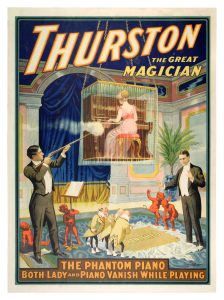Introduction
J. Keri Cronin and Hannah Dobbie

This book is an introduction to the field of visual culture. It is intended as a resource for introductory-level undergraduate courses, but we have aimed to make it open and accessible so that a wide variety of readers from a range of backgrounds and areas of study might find it useful and interesting.
If you make or work with images, it is important to be well-versed in the topics covered here. If you use images for your presentations, assignments, or projects, it is helpful to think about how those pictures make meaning–including the reasons you might have selected to work with them. You might not even be aware of those reasons until you stop to think deeply. And if you consume images–and these days, this is pretty much all of us!–understanding how images make meaning is becoming increasingly important. In other words, we are surrounded by images but we rarely stop to think about how they work.
The aim of this book and its accompanying course at Brock University (VISA/IASC 1Q98: Introduction to Visual Culture) is to provide students and readers with tools that they can use to help make sense of and think critically about images they encounter in the various aspects of their lives. The skills and concepts developed and learned in this class will be useful for this course and beyond. It is our hope that you use the ideas you encounter here far beyond the parameters of any single course.
This book is not–nor could it ever be!–a comprehensive history of important images throughout history. Rather, we introduce concepts and ideas that can help make sense of the pictures we have selected as examples. We encourage you to take those concepts and ideas and consider how you can apply them to other images you come across in your life. The images we have included as examples in this book are just that–examples. We could easily swap them out for different images.
When we study visual culture, we cast our net wide. Unlike the related field of art history where work by professional artists tends to be the main focus of study, the field of visual culture is concerned with a broad range of imagery. What we typically think of as “art”–drawings, paintings, photographs, etc.–certainly can be brought into close examination in a visual culture course. But so can things like posters advertising a magic show, images shared on social media, advertising, illustrated books, menus from a restaurant, etc. The list goes on and on. While some of these items may seem more or less urgent or interesting to you, it is important to stop and think about how images–no matter what type nor where we encounter them–always convey meanings. And it is this meaning-making process that is our central concern in a course like this.
The study of visual culture asks us to think carefully and look closely. It invites us to slow down and consider how an image functions in our world and how it might have functioned in different times and in different places. As we will quickly see, this is not an easy, quick, or straight-forward process. The ways that images make meaning can shift and change, and much depends on the context in which the image is viewed. In other words, this is not a field of study in which there are quick, easy answers to be memorised. But the complexity of our world coupled with the sheer number of images we all encounter on a daily basis makes the project of understanding how images work more urgent than ever. There is growing concern about the lack of critical thinking and digital literacy in our world. Courses like this can help build these important skills.
In addition to exploring different approaches to thinking about images through examples and analysis, we have also included reflection questions and exercises. We encourage you to take the time to do these. They are important! The process of reflection through messy, freeform, stream-of-consciousness writing can be extremely helpful as we stop and look closely at images. We may be surprised at some of the things we end up jotting down, things we might not even know we were thinking. This kind of practice helps us deepen our understanding of the images we encounter and can help us generate connections between images and the experiences we have of the world around us. The next section of this book discusses this in more detail.

